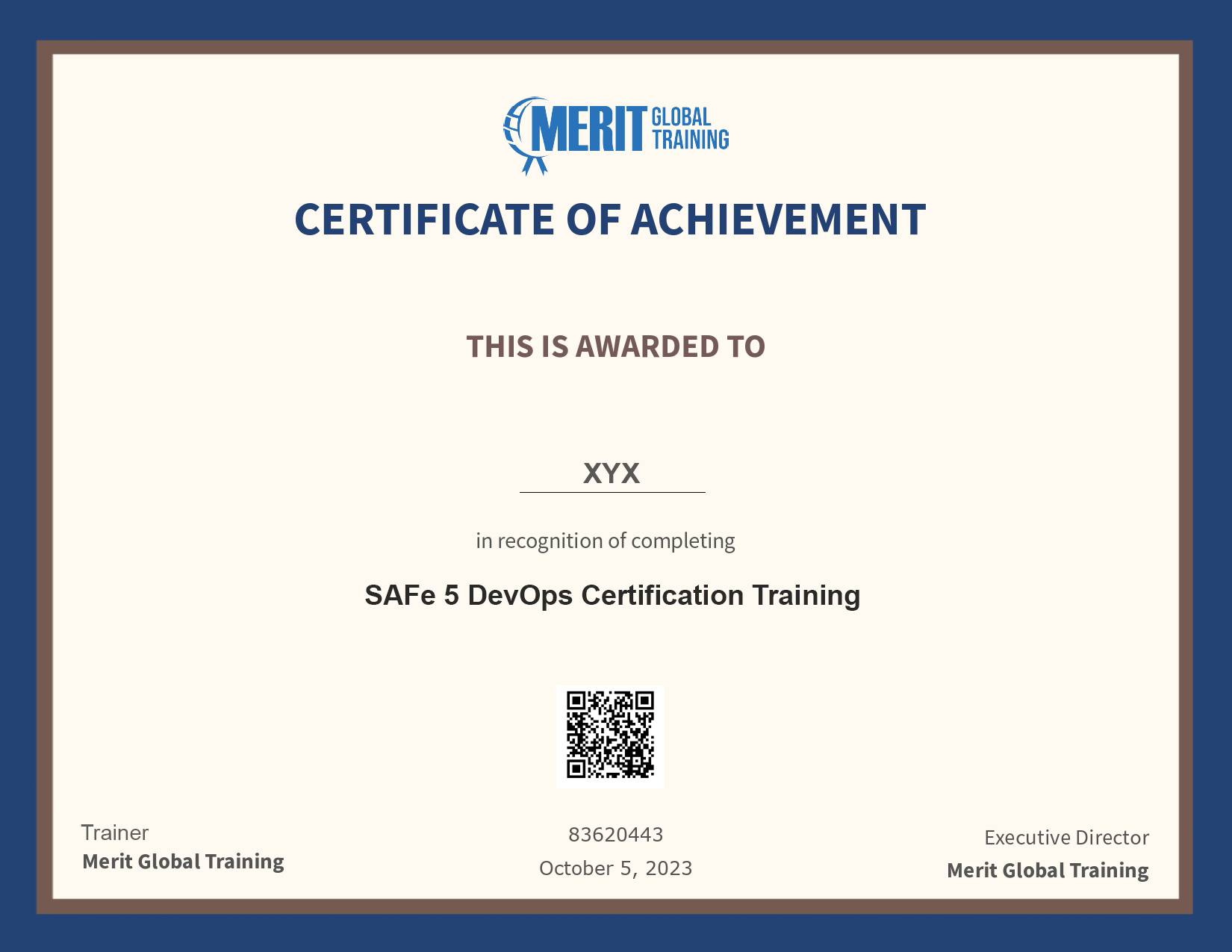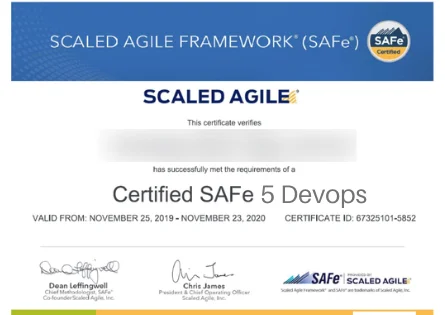The Benefits of Becoming a SAFe Agilist for Agile Improvement
Wiki Article
SAFe Certification: Encouraging Leaders in Scaled Agile Frameworks
The landscape of task monitoring is progressing, and SAFe Accreditation stands as a critical element for leaders looking for to apply the Scaled Agile Structure efficiently. This certification outfits specialists with crucial abilities to foster collaboration and advancement within their teams, ultimately boosting organizational efficiency. The trip to ending up being a licensed SAFe leader entails more than simply obtaining expertise; it includes recognizing the nuanced roles and duties within nimble settings. As we explore the ins and outs of SAFe Qualification, the implications for management effectiveness and business success warrant deeper assessment.Comprehending SAFe Qualification
SAFe qualification, which stands for Scaled Agile Structure qualification, is a credentialing program made to equip experts with the understanding and abilities essential to apply agile practices at scale within their organizations. The SAFe framework supplies an organized technique that aids companies straighten their groups and take care of bigger tasks effectively, making certain that nimble approaches are used constantly throughout different levels.The accreditation incorporates numerous duties, including SAFe Agilist, SAFe Specialist, and SAFe Program Specialist, each concentrating on different elements of the framework. The program emphasizes the importance of lean concepts, continual distribution, and cooperation amongst teams, fostering an atmosphere for technology and effectiveness.

Participants undertake extensive training that integrates academic understanding with practical application, improving their ability to lead active changes. The educational program includes subjects such as nimble groups, program execution, and profile management, making sure that certified specialists are skilled in all facets of the SAFe approach.
Benefits of SAFe Accreditation
Getting a Secure accreditation supplies various benefits for professionals wanting to boost their professions in active job monitoring. Most importantly, it furnishes people with a comprehensive understanding of the Scaled Agile Framework, allowing them to properly execute active concepts across large companies. This knowledge is critical as businesses progressively adopt active methods to boost productivity and adaptability.Additionally, SAFe accreditation enhances a prospect's marketability and career leads. SAFe For Architects. As companies look for qualified specialists to lead their dexterous makeovers, qualified people can command greater wages and stand apart in a competitive job market. Moreover, acquiring this certification demonstrates a dedication to continual learning and professional growth, which is very related to by employers.
Networking opportunities also emerge from SAFe qualification, linking people with a neighborhood of like-minded professionals and sector leaders. This can result in understanding, mentorship, and partnership sharing, further improving one's expert experience.
Last but not least, accredited professionals are frequently better furnished to promote a society of cooperation and advancement within their groups, driving successful end results in nimble tasks. In general, the advantages of SAFe certification are manifold, making it a useful investment for those in the nimble task management domain name.
The Qualification Process

Candidates are after that urged to take part in a thorough training program, generally performed by a certified SAFe trainer. These training courses cover crucial principles, principles, and methods of the Scaled Agile Structure, supplying participants with important insights and functional expertise.
Following the training, candidates must pass a qualification test to demonstrate their understanding and proficiency in applying SAFe concepts. The tests are created to evaluate not only understanding but also the ability to apply active methods effectively within a scaled setting.
When certified, people obtain access to a wealth of sources, consisting of community networks and recurring knowing opportunities, which additionally boost their dexterous management capabilities. Keeping accreditation requires constant professional growth, making sure that leaders remain existing with progressing practices within the structure. Ultimately, the certification procedure is a rigorous yet satisfying pathway for those aiming to succeed in dexterous leadership.
Roles and Obligations
Reliable implementation of the Scaled Agile Structure (SAFe) depends heavily on plainly specified roles and obligations within a company. These roles are necessary for making sure placement, efficiency, and efficient cooperation across teams.At the group degree, my company vital roles include the Scrum Master, Item Proprietor, and Agile Group Members. The Scrum Master helps with the active process, making sure that the group sticks to the SAFe concepts while removing obstacles. The Item Proprietor is liable for taking full advantage of the worth of official website the item and taking care of the stockpile to align with business purposes. Agile Team Members contribute their specialized skills to provide top notch increments.
At the program degree, the Launch Train Engineer (RTE) plays an important role in orchestrating the Agile Launch Train (ART), making sure smooth program implementation and positioning throughout numerous groups (SAFe Lean Portfolio Management). In addition, the system engineer and company owner offer technological support and strategic vision, respectively
Continuous Improvement in SAFe
Continual renovation is a cornerstone of the Scaled Agile Structure (SAFe), driving companies to enhance their processes, items, and general performance. By cultivating a culture of continuous enhancement, SAFe motivates groups to regularly evaluate their process and outcomes, identify inadequacies, and execute strategies for improvement. This repetitive procedure not just boosts efficiency but additionally aligns groups with the organization's strategic goals.Central to this technique are the Inspect and Adapt (I&A) workshops, which provide organized possibilities for representation and discovering. During these sessions, groups evaluate performance metrics, go over challenges, and generate workable insights to lead future models. In addition, using Agile Launch Trains (ARTs) facilitates cross-functional cooperation, allowing groups to share finest techniques and drive collective renovation.
Furthermore, Lean-Agile management plays a crucial function in advertising a state of mind of continual improvement. Leaders are charged with cultivating an environment where testing is encouraged, and failings are considered as learning opportunities. By embedding constant renovation into the organizational culture, SAFe encourages groups to remain nimble and receptive to transforming market demands, ultimately improving their capability to supply value to clients.
Verdict
In verdict, SAFe Accreditation offers as a vital device for leaders aiming to implement nimble techniques effectively within their organizations. Eventually, SAFe Qualification contributes substantially to organizational success and strength.The landscape of task monitoring is progressing, and SAFe Certification stands go to these guys as a critical element for leaders seeking to carry out the Scaled Agile Framework effectively.Acquiring a Risk-free accreditation provides various advantages for experts looking to boost their jobs in dexterous project administration - SAFe Lean Portfolio Management. The Scrum Master helps with the agile process, ensuring that the group adheres to the SAFe concepts while removing impediments. By embedding constant renovation into the organizational culture, SAFe equips teams to remain receptive and agile to changing market needs, ultimately boosting their capacity to supply worth to consumers
In final thought, SAFe Certification offers as an important tool for leaders aiming to implement agile practices properly within their organizations.
Report this wiki page